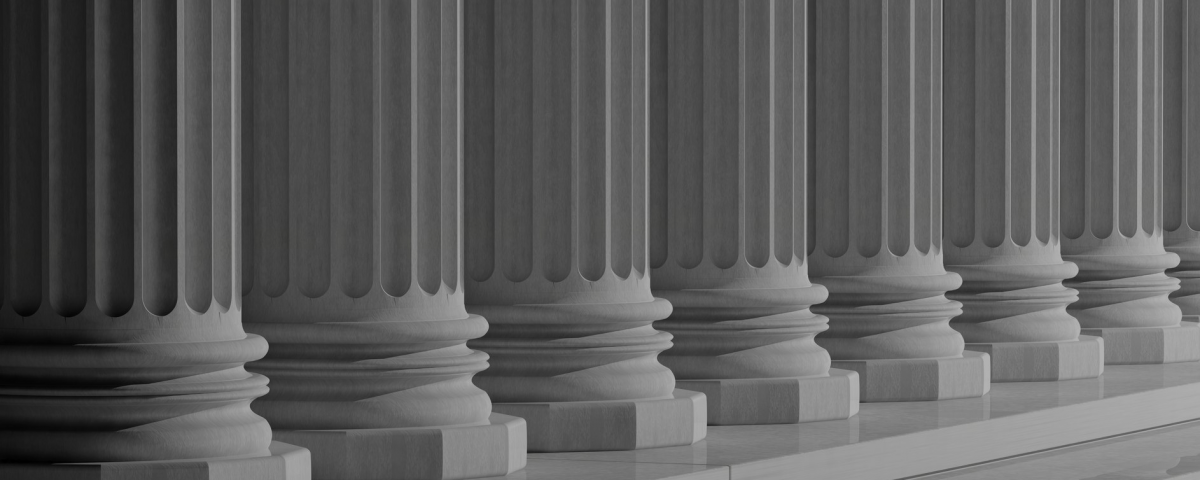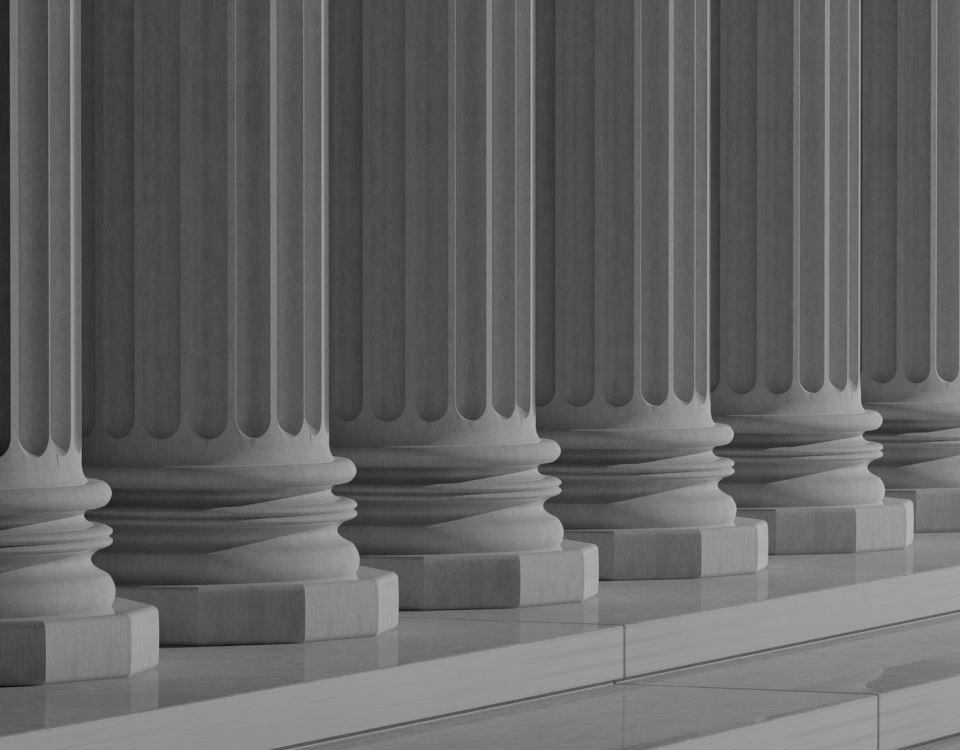
Possible Consequences of R v Beaudry, 2018 CMAC 4 – Observation #1
April 18, 2019
A Few Comments on Bill C-77 … Redux
May 29, 2019A few comments on Bill C-77 …
On 27 May 2019, I had the privilege of testifying before the Senate Committee on National Security and Defence.
While I normally prefer to focus on legal subjects, rather than political subjects, I feel an overwhelming urge to offer a couple of general observations about what Bill C-77 represents.
In many ways, Bill C-77 is the progeny of Bill C-71, which was introduced in Canada’s 41st Parliament, but which died on the Order Paper after First Reading (due, in part, to a subsequent election).
The Short Title of Bill C-71 was “Victims Rights in the Military Justice System Act” (which, all things considered, was not as emotionally-charged a short title as other legislation).
Bill C-77 similarly focuses, in part, on “Victims’ Rights”.
However, that is not the only focus of Bill C-77. Bill C-77 also introduces a statutory definition of ‘military justice’ as well as the substitution of ‘Summary Hearings’ for the Summary Trial Process. As I discuss below, both the proposed definition of ‘military justice’ and the new ‘Summary Hearing’ process are problematic. Thus, it appears that the tactic that is being employed with Bill C-77 is that a couple of problematic statutory amendments are being ‘piggy-backed’ onto statutory amendments that no political decision-maker would dare to oppose (i.e. the introduction of statutory ‘Victims’ Rights’). Then, legislators are told: ‘Please don’t delay this important legislation on Victims’ Rights, just because of some problems with Summary Hearings…’
To be very blunt: I find this tactic disingenuous.
‘Military Justice’
I have commented on what I consider to be the proper definition of ‘military justice’ under the present version of the National Defence Act (NDA). I will not bore you, dear reader, with extensive pontification on this point. (Well, maybe just a little…). However, it is worth considering what Bill C-77 proposes.
The definition for ‘military justice’ is relevant to the role of the Judge Advocate General (JAG) as ‘superintendent of the administration of military justice in the Canadian Forces’ by virtue of subs 9.2(1) of the NDA: (“The Judge Advocate General has the superintendence of the administration of military justice in the Canadian Forces.”) and subs 9.2(2): (“The Judge Advocate General shall conduct, or cause to be conducted, regular reviews of the administration of military justice.”).
The received wisdom, not only of the current JAG, but her predecessors over the past 2 decades, is that ‘military justice’ is either limited to, or synonymous with, the Code of Service Discipline. Consequently, the focus of the Office of the JAG, at least when it comes to ‘superintendence’ of military justice, has been on the Code of Service Discipline. Certainly, the Deputy Judge Advocate General – Military Justice (DJAG MJ), who testified before the Committee after I did, is focused solely on the Code of Service Discipline. Conceptually, the JAG’s definition of ‘military justice’ would exclude important issues of justice such as grievances and other significant administrative statutory decision-making.
To me, this has never made sense. Decision-making concerning grievances, remedial measures, and any of a number of so-called administrative decisions can have equal, or greater, impact on the career and life of a CF member. This is particularly true where such administrative decisions appear increasingly to be used instead of the Code of Service Discipline.
I suggest that, under the current legislation, equating ‘military justice’ to the ‘Code of Service Discipline’ is incorrect and artificially narrows the JAG’s responsibilities, to the detriment of the true application of military justice. Enshrining the current interpretation through Bill C-77 would be equally problematic.
Instead, I suggest that ‘superintendence of military justice’ actually empowers the JAG to ensure that the rule of law is observed in the broader administration of the affairs of the CF, including the Code of Service Discipline, but also extending beyond this subject. The current application of policies under Op HONOUR provides a useful litmus test to establish whether the JAG is truly superintending military justice in this broader sense.
The term ‘military justice’ is not presently expressly defined at section 2, or anywhere else, in the NDA. The definition of ‘military justice’ proposed under Bill C-77 would define ‘military justice’ as “… all aspects of the application of the Code of Service Discipline …”. It would equate ‘military justice’ – one term of art under the NDA – to the Code of Service Discipline – a distinct term of art under the NDA. It would limit the role of the JAG in ensuring respect for the Rule of Law in statutory decision-making in the CF.
The “superintendence of military justice” was introduced in the 1998 amendments to the NDA, under Bill C-25. Consider what the legislative summary, prepared by the Parliamentary Research Branch, said about these amendments:
- Clause 2 [of Bill C-25] would amend sections 9 and 10 of the Act in order to clarify the qualifications and responsibilities of the Judge Advocate General of the Canadian Forces and to strengthen the office’s independence from the chain of command by providing for some security of tenure for the post. …
- Clause 2 would also set out in the Act the general duties of the Judge Advocate General to be legal adviser on matters of military law to the Governor General, the Minister of National Defence, the Department of National Defence and the Canadian Forces; and to perform general oversight of the administration of military justice in the Canadian Forces. More specifically, the Judge Advocate General would regularly have to review and report on the administration of military justice and would be responsible for the preparation of an annual report on this subject to the Minister of National Defence, who would, in turn, be required to table the report in Parliament.
Bill C-25 enacted three significant changes to the administration of the affairs of the CF, and to what I suggest constitutes elements of military justice. First, it made significant changes to the jurisdiction and practical application of the Code of Service Discipline. Second, it made significant changes to the statutory grievance process. Finally, it introduced statutory provisions relating to the governance of military police. Additionally, the JAG was called upon to report regularly to the Minister concerning the state of military justice in the CF. I suggest that the goal in this reporting requirement was intended to reinforce the rule of law by ensuring that the person responsible to Parliament for the governance of the CF (i.e. the Minister) would be kept informed of the success in ensuring that the Canadian Forces is, indeed, governed in a manner consistent with the rule of law in a constitutional democracy.
These statutory changes were followed closely by regulatory amendments intended to implement the statutory changes. Although there were further statutory and regulatory amendments to all three subject areas over the past two decades, most of these could be characterized as adjustments arising from either lessons learned or judgments of appellate or reviewing courts. The nature and scope of the changes introduced in 1998 have direct bearing on determining what ‘military justice’ really means.
Upon reading this proposed amendment to the NDA, my first reaction was: ‘why’? Why finally define this term of art after 20 years? And why define it, essentially, by using another term of art from the NDA?
It strikes me as being a little disingenuous; it has the appearance of attempting, retroactively, to fix what has been a consistently problematic interpretation of the NDA.
Finally, it would not be a conceptual stretch to suggest that military justice is to the military what justice is to the broader society. Compare section 9.2 of the NDA to paragraph 4(b) of the Department of Justice Act: “4. The Minister is the official legal adviser of the Governor General and the legal member of the Queen’s Privy Council for Canada and shall … (b) have the superintendence of all matters connected with the administration of justice in Canada, not within the jurisdiction of the governments of the provinces …”.
The Minister of Justice (and Attorney General) superintends not just criminal justice, but the administration of justice in Canada. While it may be a very general comparator, the JAG acts in the same regard to military justice. While the JAG’s duties, powers and functions do not represent a “… derogation of the authority of the Minister of Justice and Attorney General of Canada under the Department of Justice Act…”, the JAG’s duties, powers and functions may also be interpreted in light of that other Act of Parliament.
If the NDA is amended to expressly define ‘military justice’ as representing all aspects of the Code of Service Discipline, then my foregoing analysis is largely semantic. But I return to my previous question: why make that amendment? The result would be that one term of art (military justice) would essentially be defined by a different term of art (Code of Service Discipline), which, itself, is not (and would not be) expressly defined under the NDA.
Wouldn’t it be simpler to amend section 9.2(1) of the NDA to read: “The Judge Advocate General has the superintendence of the administration of all aspects of the Code of Service Discipline in the Canadian Forces.”? That would be the shortest distance between two points.
Perhaps the shortcoming of this approach would be that the JAG would have to admit that the received wisdom over the past 20 years was short-sighted and incorrect.
I suggest that it would be problematic for Parliament to define ‘military justice’ as being the equivalent of ‘the Code of Service Discipline’. Quite apart from the awkward aspect of defining one statutory term of art as being identical to a distinct statutory term of art, it is problematic from a policy perspective. Why would Parliament not wish the JAG and her legal advisors to superintend all aspects of military justice, rather than just the Code of Service Discipline? Ultimately, this issue concerns the extent to which Parliament intends that the Canadian Forces be governed in a manner consistent with the rule of law.
The Canadian Forces can be likened to the nation’s ‘Big Stick’. It represents the capacity of a nation to resort to force in support of its foreign and global policy objectives. The Canadian Forces’ mandate includes, at times, the requirement to resort to lethal force in advancement of our nation’s interests. The question for Parliament, then, is whether it wishes to have a Canadian Forces governed by individual whim, impunity, and caprice, or by the rule of law. The JAG (and the Office of the JAG) is structurally removed from the chain of command when it comes to the provision of legal advice. This distinguishes Canadian Legal Officers from their American counterparts. The purpose for this limited independence, I suggest, is to permit legal advisors to ‘speak truth to power’. Why then, would Parliament want such superintendence to be limited solely to the Code of Service Discipline? Wouldn’t Parliament wish all aspects of the administration of the affairs of the Canadian Forces – and the statutory decision-making of its military leaders – to be governed by the rule of law?
I suggest that the definition of ‘military justice’ is tied directly to whether Parliament wishes to have statutory decision-makers comply with the rule of law, or whether Parliament would be satisfied with a military governed by arbitrary whim.
Summary Hearings
The ‘Summary Hearing’ process is promoted as a ‘decriminalized’ Summary Trial process. It is purportedly modeled on professional regulatory processes. It is trumpeted as a step forward.
I disagree.
I, and other critics of the Summary Hearing process, take the position that it is not an improvement on the Summary Trial process. Instead, in actual fact, it is a process by which the Canadian Forces chain of command can secure findings of guilt via a less rigorous process that affords an accused even fewer protections that Summary Trials. It is also a process that has been developed behind closed doors and without the benefit of true public scrutiny or debate.
I wish to highlight something that is consistently omitted from certain critiques of the Summary Trial process. No reasonable legal scholar or practitioner would suggest that the Summary Trial process under the Code of Service Discipline has all the hallmarks of fairness that arise in a civilian court of criminal justice. There is no right to counsel (although there is no prohibition against representation by counsel). The rules of evidence are considerably relaxed. There is no formal transcript. Perhaps most importantly, the Presiding Officer, who is both trier of fact and the person controlling the process, is not constitutionally independent and (barring rare circumstances) is not extensively trained in the law.
While there are rules for disclosure, procedural fairness, and a criminal burden of proof in a Summary Trial, these are not the factors that makes the summary trial process Charter-compliant. The saving grace of the summary trial process is the accused’s right to elect court martial and thereby benefit from all of the safeguards commensurate with full answer and defence: representation by legal counsel (free of charge, I might add); a constitutionally independent judge; and clear rules of evidence, among other benefits.
If there is a shortcoming in the Summary Trial process – and there is a shortcoming – it is with the five offences that, under QR&O 108.17, and in certain circumstances, that do not carry a presumptive right to elect court martial. In my respectful view, this is what needs to be changed.
Now let’s consider what is on offer with the Summary Hearing process:
- Unlike the offences under the Summary Trial process, the ‘infractions’ under the Summary Hearing process will not established under statute; they will be established by some as-yet-unknown regulations;
- In fact, the entire process will be established under regulations and, presumably, the Summary Hearing process will not have any greater safeguards than the Summary Trial process;
- Additionally, the burden of proof will be reduced to the civil standard (balance of probabilities) from the criminal standard (beyond a reasonable doubt); and
- Perhaps most perplexing of all, the accused will not have a right to elect court martial instead. If the chain of command wants to use the less rigorous Summary Hearing process to punish the accused – and punishment it is – then the accused has no say in the matter.
Proponents of the Summary Hearing process point to the ‘decriminalization’ of ‘infractions’ under this process. However, minor offences (or, perhaps, more accurately, minor punishments) dealt with under the Code of Service Discipline have already been ‘decriminalized’ by virtue of section 247.29 of the National Defence Act. Moreover, the proposed penalties for the so-called Summary Hearing ‘infractions’ will still be punitive, and can include: increased fines (based not just upon salary, but also allowances – some of which are intended to offset increased personal costs to CF members); deprivation of liberty through confinement to barracks; and reduction in rank. And all of these penalties will arise in a process with a reduced burden of proof and no opportunity for the accused to elect trial before a constitutionally independent judge and court.
In effect, what the Summary Hearing process truly represents is an easier way to find a CF member guilty. Once that guilt is established, under a regime with fewer safeguards, then the chain of command can employ whatever additional punitive administrative sanctions they wish to use. After all, those non-Code of Service Discipline measures would fall outside the new definition of ‘military justice’, so the JAG will have no need to scrutinize or superintend what the chain of command is doing.
What gives me great pause about this proposal is that senior decision-makers of the Canadian Forces have not demonstrated a coherent understanding of how the civil standard of proof should be applied in coercive public law regimes. As the report of the Barreau du Quebec on Bill C-77 explains, the evidentiary basis of this burden still requires clear, convincing, and cogent evidence. We are told that the proposed Summary Hearing process represents an administrative professional regulatory regime, similar to what provincial regulators employ.
Consider the unanimous SCC judgment in F.H. v McDougall, [2008] 3 SCR 41 (per Rothstein J): “In Ontario Professional Discipline cases, the balance of probabilities requires that proof be “clear and convincing and based upon cogent evidence” (para 31) and “…evidence must always be sufficiently clear, convincing and cogent to satisfy the balance of probabilities test. But again, there is no objective standard to measure sufficiency. In serious cases, like the present, judges may be faced with evidence of events that are alleged to have occurred many years before, where there is little other evidence than that of the plaintiff and defendant. As difficult as the task may be, the judge must make a decision. If a responsible judge finds for the plaintiff, it must be accepted that the evidence was sufficiently clear, convincing and cogent to that judge that the plaintiff satisfied the balance of probabilities test.” (para 46)
Yet, when significant decisions are made in the administration of the affairs of the Canadian Forces, based upon this standard of proof, statutory CF decision-makers consistently fail to apply this standard properly.
Under Op HONOUR, a common response from the chain of command – one far more common than prosecution under the Code of Service Discipline – is significant administrative action up to, and often including, compulsory release under a punitive release item. Such decisions are purportedly made on a balance of probabilities. But here is an example of how they are actually made:
I offer a practical example of a decision in which the statutory decision-maker, Director Military Career Administration (DMCA), ordered the compulsory release of a CF member. For the sake of anonymity, let’s call that CF member “Major Major” (no bonus points for guessing what is one of my favourite novels …). Major Major was investigated by the CFNIS for an alleged sexual assault. The complaint was raised by a 3rd Party, not the purported victim. When the CFNIS interviewed the purported victim, she indicated that any interaction she had with Major Major was entirely consensual. The investigation was closed. A few months later, the purported victim then contacted the CFNIS with a markedly different version of events. A second investigation was undertaken. No charges were laid, presumably because the markedly contrary statements by the purported victim would not have supported a reasonable prospect of conviction.
Over a year after the initial ‘complaint’ was made, Major Major’s commanding officer referred the allegations to DMCA with a recommendation for compulsory release. After conducting an Administrative Review under DAOD 5019-4 (in which DMCA staff had months to prepare the file, but the respondent was only given 3 weeks to respond), DMCA concluded that he found Major Major “… guilty of sexual assault on a balance of probabilities and therefore violated Op HONOUR”. The ‘evidence’ for this finding was a redacted 5-page summary of the second CFNIS investigation. No mention was made of the first investigation that contained fundamentally contrary evidence. Moreover, no actual ‘evidence’ was considered by DMCA. The only aspect of the CFNIS investigation that was disclosed to the respondent (and, therefore, presumably relied upon by DMCA) was the military police summary, in which names of witnesses were redacted. No actual witness statements were ever disclosed or, presumably, used in the determination. Even if such statements had been disclosed, conducting an evaluation of reliability and credibility in a ‘paper hearing’, where there are diametrically opposed versions of events, and no opportunity for anything remotely resembling cross-examination, is highly problematic.
The shortcomings of this process did not end there. Major Major grieved this decision to the initial authority (IA), Director General Military Careers (DGMC). Upon grieving the decision, Major Major (who was released before his grievance was determined by the initial authority) was informed by the staff analyst for the initial authority that Major Major improperly focused his argument on Op HONOUR and the fact that DMCA’s determination, under Op HONOUR, was flawed.
Notwithstanding that an allegation of sexual assault and Op HONOUR were expressly cited by DMCA as the justification for the compulsory release, the grievance analyst, realizing that such a position was untenable, proceeded to try to ‘rehabilitate’ the rationale offered by the chain of command by altering the justification to “an error in judgement by the respondent in having an intimate relationship with a subordinate” (even though the person in question was not a subordinate of Major Major).
This is the type of decision-making that we can anticipate from the CF chain of command under a ‘balance of probabilities’ applied within a coercive public law regime.
Unfortunately, this rather problematic application of the civil burden of proof is not an isolated example. In ordering compulsory releases and other administrative actions and sanctions under Op HONOUR, DMCA consistently relies upon ‘evidence’ that is not actually evidence and misapplies the burden of proof. I suggest that the general perception of CF statutory decision-makers regarding the civil burden of proof is that it represents a flexible burden that allows them to draw whatever conclusion they wish to draw, regardless of the merit, strength or nature of the evidence before them (assuming that they actually have evidence before them).
Conclusion
I suggest that administrative decision-making in relation to Op HONOUR must necessarily be of concern to Parliament when considering Bill C-77. Even based upon the statistics presented by the CDS, the administrative response to Op HONOUR tends to outweigh the disciplinary response. Yet, as I mention above, Bill C-77 would exclude such decision-making from the JAG’s superintendence of the rule of law.
So, why should we be concerned about a problematic statutory definition of ‘military justice’ or the short-comings of the Summary Hearing process?
The blunt reality is that these two propositions – one, a very brief amendment to the definitions under the NDA; the other, a significant change to the Code of Service Discipline – represent a deterioration of procedural fairness and substantive reasonableness in statutory decision-making under the NDA. And these changes are, in effect, camouflaged behind ‘Victims’ Rights’ provisions that few people would oppose.
While camouflage is a necessary and desirable factor to consider in military operations, it has no place in legislative processes or framework. Legislation that affects the rights, interests, and privileges of those persons subject to coercive public law regimes must be done with the benefit of transparent and public debate. Problematic legislation – particularly provisions that are clearly vulnerable to Charter challenge – should not be rammed through Parliament tied to more favourable legislation like a Judas goat.




